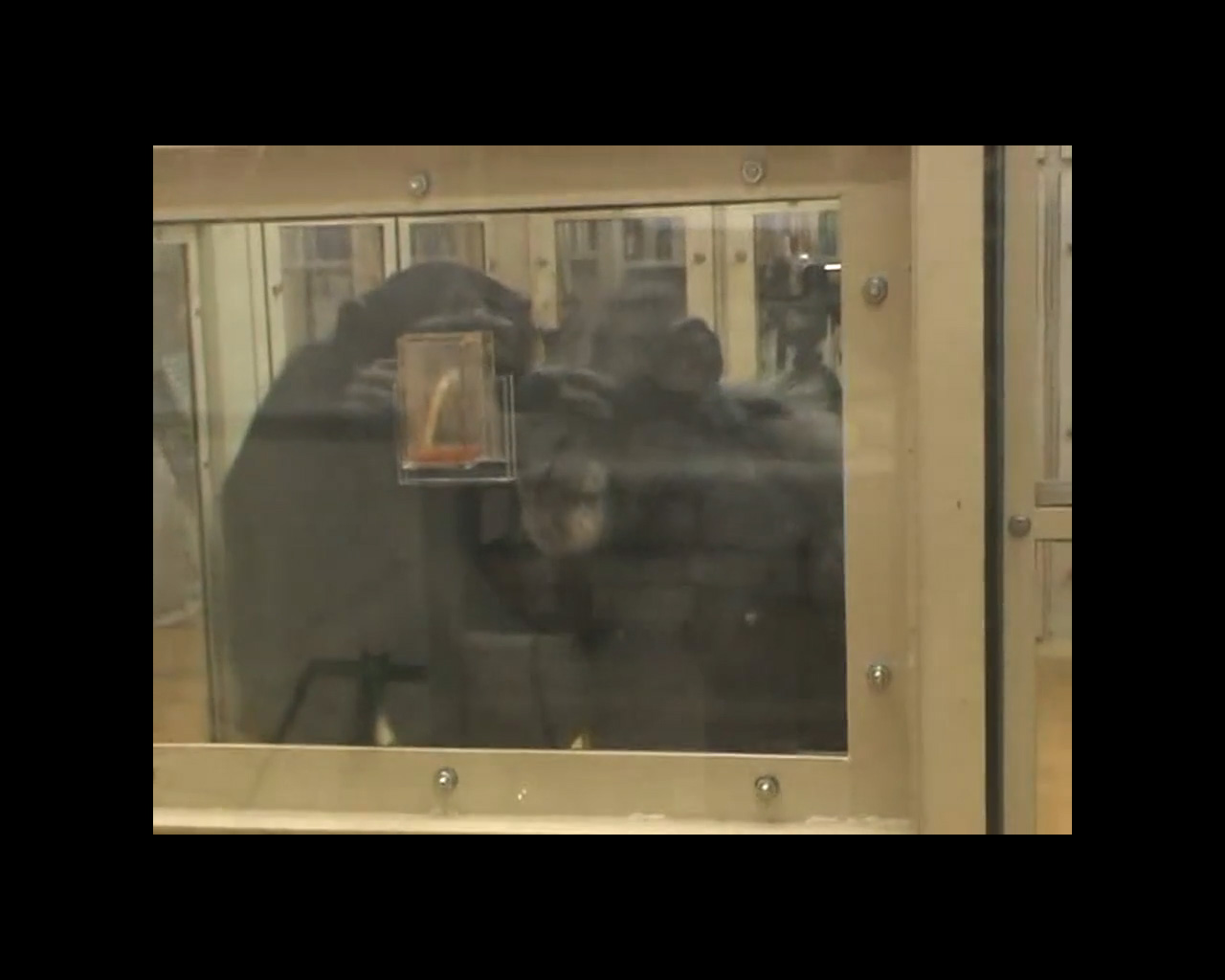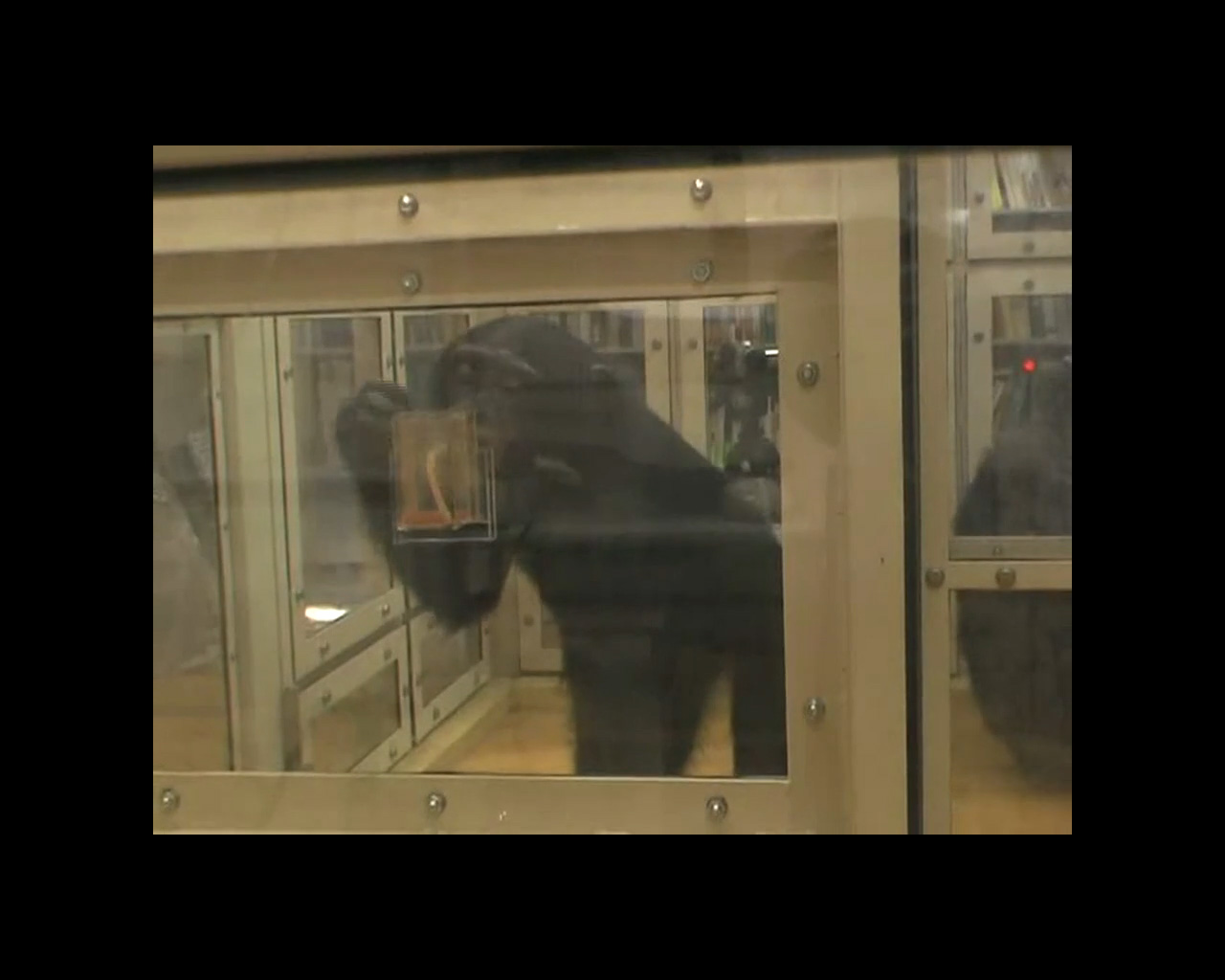Chimps Learn Tool Use by Watching Others

Chimpanzees can learn to use tools more efficiently by watching how others use them, new research suggests. The findings help illuminate ways that culture could evolve in nonhuman animals.
"Social learning is very important to maintaining a culture," study researcher Shinya Yamamoto, of Kyoto University in Japan, told LiveScience. "For example, in humans, we can develop technologies based on previous techniques, and other people can learn the more efficient techniques by accumulating cultural knowledge." The new research provides insight into how cultural evolution might occur in chimpanzees.
In the study, nine captive chimpanzees at the Primate Research Institute at Kyoto University were presented with a straw-tube they could use to obtain juice from a bottle through a small hole. Of their own accord, the chimps used one of two techniques to get the juice: "dipping" and "straw-sucking." The dipping technique involved inserting the straw into the juice and removing it to suck on the end, whereas straw-sucking entailed sipping the juice through the straw. Straw-sucking was a much more efficient means of getting juice than dipping.
Five of the chimps initially used the dipping method and four used the straw-sucking method. The researchers then paired each of the five chimps who used dipping with a chimp who was a straw-sucker. Four of the dippers switched to straw-sucking after observing the other animal using the more effective technique. The fifth dipper switched too, but only after watching a human using it. [See video of the chimps.]
Chimps who paid the most attention to the straw-sucking demonstrator switched to the new method more rapidly. After switching, the animals never reverted to the dipping method.
The apes' adoption of the straw-sucking technique shows social learning, the researchers say. The chimpanzees who were dippers "didn't learn the sucking technique by themselves, only when they are paired with the sucking individual," Yamamoto said. The one chimp that didn’t adopt the new technique right away may have been subordinate to her partner chimp, Yamamoto said. As soon as Yamamoto demonstrated the technique, however, the chimp started using it.
The results contrast with the findings of previous studies, which have shown that chimpanzees don't always adopt an improved technique used by others. One explanation may be that unlike in previous studies, the better technique (straw-sucking) was no more physically or mentally difficult to perform than the original technique (dipping), the researchers said. Additionally, the chimpanzees in previous studies seemed satisfied with using their original technique, whereas these chimps may not have been content with their method's efficiency, the researchers added.
Get the world’s most fascinating discoveries delivered straight to your inbox.
This study and others like it "add to the idea that the apes are very well capable of social learning," primatologist Frans de Waal, of Emory University in Atlanta, told LiveScience.
Scientists have debated for decades about whether or not animals have culture. "We cannot hold chimpanzees against the standard of modern-day human culture," de Waal, who was not involved with the research, said, but "the border is much grayer than we thought."
The study was published online Jan. 30 in the journal PLOS ONE.
Follow LiveScience on Twitter @livescience. We're also on Facebook & Google+.

 Live Science Plus
Live Science Plus






